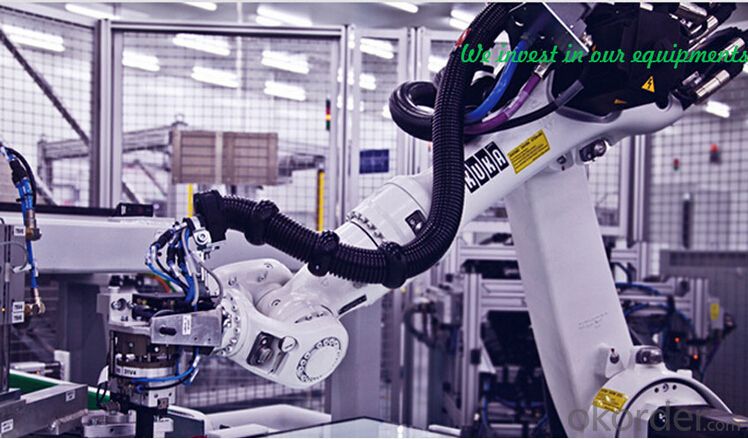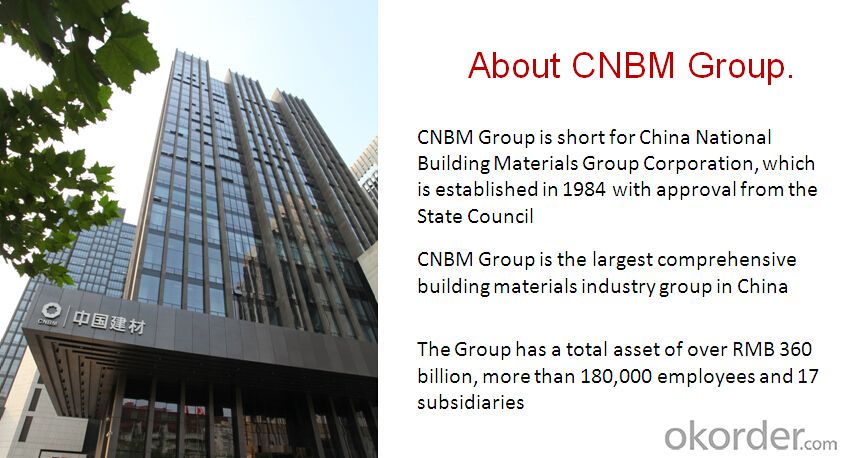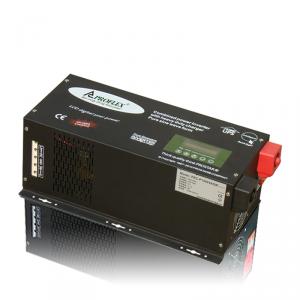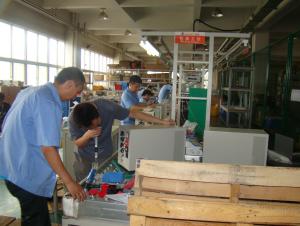Grid-Tied Output Power:500w Power Inverter
- Loading Port:
- Tianjin
- Payment Terms:
- TT OR LC
- Min Order Qty:
- 100 pc
- Supply Capability:
- 10000 pc/month
OKorder Service Pledge
OKorder Financial Service
You Might Also Like
Item specifice
Specifications
DC input:10.8~28VDC
AC output:120/230VAC
output power:500w
socket:Universal,USA,Australia,U.K,France,Germany etc
Type | Solar On-grid | Wind On-grid | ||||
Rated Power | 300W | 500W | 1000W | 300W | 500W | 1000W |
Maximum input current ( DC ) | 350W | 550W | 1200W | 400W | 600W | 1200W |
DC Maximum Input | 12.5A | 21A | 42A | 12.5A | 21A | 42A |
DC Maximum Voltage | 30V | 32V | ||||
DC Voltage Range | 15V~30V | 23V~32V | ||||
Input Connection | MC4 Connectors or DC Terminals | |||||
Maximum Output Power Factor | 99% | |||||
Anti-voltage Protection | Fuse | |||||
Output Short -circuit Protection | Current Limiting | |||||
AC Standard Voltage Range | 90V-140 VAC / 180~260VAC | |||||
AC Frequency Range | 55Hz~63Hz / 45Hz~53Hz | |||||
Output Current Total Harmonic Distortion | THDIAC < 5% | |||||
Phase Error | < 1% | |||||
Islanding Protection | VAC; f AC | |||||
Ambient Temperature Range | -25 °C ~ 60°C | |||||
Humidity | 0~99% ( Indoor Design ) | |||||
Waterproof | Indoor Design | |||||
Cooling Way | Cooling Fan | |||||
Electromagnetic Compatibility | EN50081.part1 EN50082.part1 | |||||
Power System Disturbance | EN61000-3-2 EN62109 | |||||
Network test | DIN VDE 1026 | |||||
Product Size | 22*17.5*8cm | |||||
QTY/Ctn | 10Pcs | |||||
Carton Size /Weight | 66.5*35.8*49cm , 22Kgs | |||||
(1) High converting efficiency higher than 97%
(2) Built-in MPPT tracker is equipped in the power inverter to optimize the power transformation
(3) Reversed current protection for preventing equipment damage
(4) Automatic battery temperature compensation for long-term reliability
(5) The solar charge controller is suitable for various types of batteries for the different charging modes
(6) Capable of connecting additional DC load for wider applications
(7) Three stage charge control system (bulk, absorption, and float mode) with temperature compensation
(8) LED indicators display charge status in real time
(9) Pulse Width Modulation (PWM) topology combined with a multi-stage charge control algorithm leads to superior charging and enhanced battery performance



Q 1. what's the payment term?
A. We accept TT,30% deposit and 70% balance agaisnt copy of BL
Q 2. how's the delivery time ?
A. usually it will take about 25 days for production
Q 3. tell me the standard of package?
A. For the small capacity, it use carton, but for big capacity, we should use strong wooden case for protection.
Q 4. what kind of material of transformer?
A. we have two types, one 100% copper and the other is copper with aluminum.It depends on your requirment. In fact,those two have no difference if normal work well. Only except the longlife. Copper is better and also higer price.
- Q:Can solar energy systems be used for powering electric vehicle solar charging stations at airports?
- Yes, solar energy systems can be used to power electric vehicle solar charging stations at airports. Solar panels can be installed on the roofs or nearby areas of airports to collect sunlight and convert it into electricity. This clean and renewable energy can then be used to charge electric vehicles at designated charging stations, reducing the reliance on fossil fuels and lowering carbon emissions. Additionally, airports often have ample space for solar panel installations, making it an ideal location for such charging stations.
- Q:Can solar energy systems be installed on multi-story buildings?
- Yes, solar energy systems can definitely be installed on multi-story buildings. In fact, multi-story buildings provide ample rooftop space to accommodate a larger number of solar panels, which can generate a significant amount of renewable energy. Additionally, the height of the building may even provide better sun exposure for the solar panels, enhancing their overall efficiency.
- Q:Do solar energy systems require a lot of maintenance?
- Solar energy systems require minimal maintenance and operate quietly and efficiently once installed. The primary maintenance task involves regular cleaning of the solar panels to ensure optimal performance, which can be easily accomplished using a soft brush or cloth, and occasionally water. Additionally, it is crucial to regularly monitor the system's performance through an online monitoring system to detect any potential issues or inefficiencies. However, compared to other energy systems, solar energy systems have fewer moving parts, reducing the need for maintenance and associated costs. In summary, solar energy systems are renowned for their reliability and long lifespan, making them a low-maintenance and cost-effective solution for generating clean and sustainable energy.
- Q:Can solar energy systems be used for water purification?
- Yes, solar energy systems can be used for water purification. Solar-powered systems, such as solar stills or solar water disinfection units, can harness the sun's energy to purify water by removing contaminants and killing harmful microbes. These systems are particularly useful in remote areas where access to clean water is limited but sunlight is abundant. By utilizing solar energy, these systems offer a sustainable and environmentally friendly solution to water purification.
- Q:Can solar energy systems power an entire home or business?
- Yes, solar energy systems have the potential to power an entire home or business. The size and efficiency of the system, as well as the energy requirements of the property, play a crucial role in determining if it can meet all the energy needs. With the right design and installation, solar energy systems can provide enough electricity for the entire building, while also reducing reliance on traditional energy sources and lowering carbon emissions.
- Q:What are the advantages of solar energy systems?
- Solar energy systems have several advantages. Firstly, they are a renewable source of energy, meaning they can be used indefinitely without depleting natural resources. Secondly, solar energy systems reduce dependence on fossil fuels, promoting a cleaner and more sustainable environment. Additionally, solar energy is abundant and widely available, making it accessible to a larger population. Moreover, solar power systems require minimal maintenance and have a long lifespan, resulting in cost savings over time. Finally, solar energy systems can provide energy independence, allowing individuals and communities to generate their own electricity and reduce their reliance on the grid.
- Q:What is the payback period for installing a solar energy system?
- The payback period for installing a solar energy system depends on various factors such as the initial cost of the system, the amount of energy it can generate, and the local electricity rates. On average, a solar energy system can have a payback period of around 5 to 15 years. However, with government incentives, tax credits, and decreasing installation costs, the payback period for solar energy systems has been reducing, making it a more financially viable option for homeowners and businesses.
- Q:Can a solar energy system be installed on a building with a metal roof?
- Certainly! It is possible to install a solar energy system on a building that has a metal roof. In fact, metal roofs are often regarded as an excellent choice for solar installations due to their long-lasting nature and durability. Compared to other roofing materials, installing solar panels on a metal roof is usually simpler and more cost-effective. Metal roofs offer a stable foundation for mounting the solar panels and can withstand the weight and various weather conditions associated with solar installations. Moreover, metal roofs tend to be more reflective, which can enhance the efficiency of the solar panels by reducing heat absorption. All in all, a metal roof proves to be an excellent option for the installation of a solar energy system on a building.
- Q:Can solar energy systems be used for powering air conditioning in commercial buildings?
- Yes, solar energy systems can be used to power air conditioning in commercial buildings. Solar panels can generate electricity that can be used to run air conditioning units, reducing the reliance on traditional energy sources and helping to lower energy costs. Additionally, solar energy systems can be integrated with energy storage solutions, allowing for the continuous operation of air conditioning even during periods of low or no sunlight.
- Q:What are the different system monitoring options for solar energy systems?
- There are several system monitoring options available for solar energy systems, designed to provide real-time data and insights into the performance and efficiency of the system. These monitoring options can help you track the energy production, detect any issues or malfunctions, and optimize the overall performance of your solar energy system. 1. Inverter Monitoring: Most solar energy systems come with an inverter, which converts DC power generated by the solar panels into usable AC power. Inverter monitoring allows you to track the output and performance of the inverter, including voltage, current, and power output. This can help you identify any issues with the inverter and ensure that it is operating at its maximum efficiency. 2. Energy Monitoring: Energy monitoring systems provide real-time data on the energy production and consumption of your solar energy system. These systems can measure the amount of energy generated by the solar panels, as well as the amount of energy consumed by your household or business. By monitoring your energy consumption patterns, you can adjust your usage to maximize the benefits of your solar energy system. 3. Remote Monitoring: Remote monitoring options allow you to access and monitor your solar energy system from anywhere, using a computer or smartphone. These systems typically include a web-based interface or mobile app, through which you can view real-time data, receive alerts, and track the performance of your system. Remote monitoring provides convenience and accessibility, allowing you to keep an eye on your solar energy system's performance even when you are away. 4. Data Logging: Data logging systems collect and store data on the performance and energy production of your solar energy system over time. These systems can track various parameters such as energy production, temperature, voltage, and current. By analyzing this historical data, you can identify any trends, patterns, or anomalies in the performance of your system, helping you make informed decisions for system optimization and maintenance. 5. Fault Detection and Diagnostics: Some advanced monitoring systems are equipped with fault detection and diagnostics capabilities. These systems can detect any malfunctions or issues with your solar energy system, such as faulty panels, wiring problems, or communication errors. By identifying and diagnosing these faults, you can take prompt actions to rectify them, ensuring the optimal performance and longevity of your solar energy system. Overall, the different system monitoring options for solar energy systems provide valuable insights and information to help you maximize the performance, efficiency, and longevity of your system. With real-time data, remote accessibility, and fault detection capabilities, these monitoring options empower you to make informed decisions and take proactive measures for optimal energy production and cost savings.
1. Manufacturer Overview |
|
|---|---|
| Location | |
| Year Established | |
| Annual Output Value | |
| Main Markets | |
| Company Certifications | |
2. Manufacturer Certificates |
|
|---|---|
| a) Certification Name | |
| Range | |
| Reference | |
| Validity Period | |
3. Manufacturer Capability |
|
|---|---|
| a)Trade Capacity | |
| Nearest Port | |
| Export Percentage | |
| No.of Employees in Trade Department | |
| Language Spoken: | |
| b)Factory Information | |
| Factory Size: | |
| No. of Production Lines | |
| Contract Manufacturing | |
| Product Price Range | |
Send your message to us
Grid-Tied Output Power:500w Power Inverter
- Loading Port:
- Tianjin
- Payment Terms:
- TT OR LC
- Min Order Qty:
- 100 pc
- Supply Capability:
- 10000 pc/month
OKorder Service Pledge
OKorder Financial Service
Similar products
New products
Hot products
Hot Searches
Related keywords






























